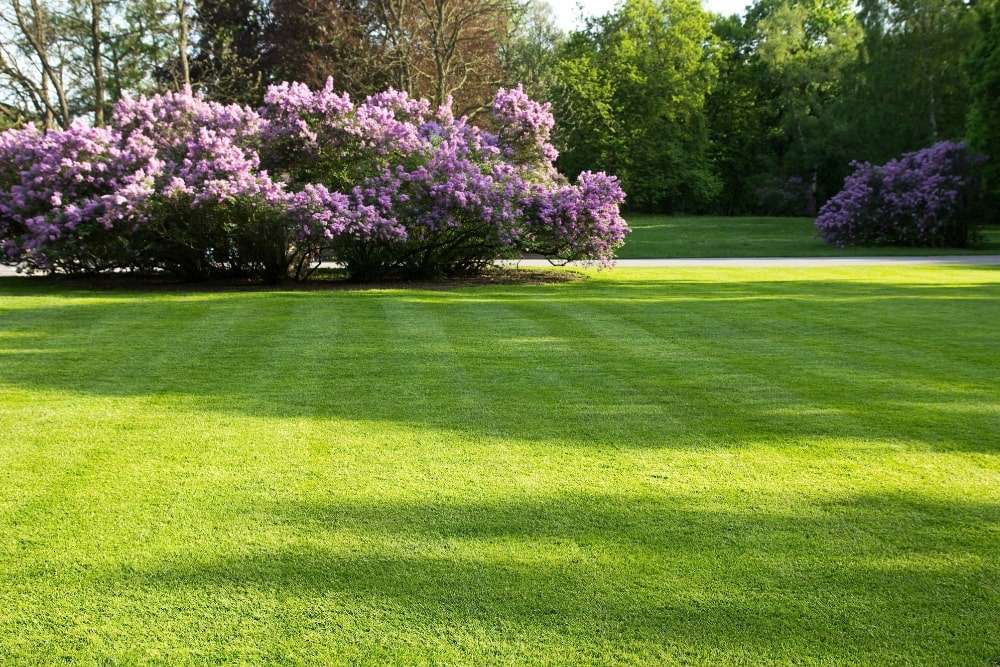Ever feel like your lawn is either gasping for water or drowning in it? Finding the right lawn watering schedule can be surprisingly tricky. Whether you’re battling summer heatwaves or trying to avoid overwatering your grass, the difference between a dull, patchy yard and a lush green lawn often comes down to how to water your lawn the right way.
In this guide, we’re breaking down the most effective lawn watering tips, debunking common myths, and helping you build an optimal lawn watering schedule that keeps your yard thriving while saving you time, money, and water.
Why Lawn Watering Tips Matter
Watering a lawn isn’t rocket science, but it is science. Without a plan, most homeowners either overdo it or don’t water enough. Too much water promotes fungus and disease. Too little causes dry patches and stress.
Here’s what’s at stake:
Wasted water = wasted money. The average lawn sprinkler uses 1,020 gallons of water an hour.
Environmental impact. Overwatering can contribute to runoff and pollution.
Weakened grass roots. Shallow, frequent watering prevents deep root growth.
Mastering just a few lawn watering tips can dramatically improve your grass’s resilience and appearance.
How to Water Lawn the Right Way?
Before you build your schedule, it helps to know the golden rules of watering lawn the smart way.
How Much Water Does My Lawn Need?
Aim for 1 to 1.5 inches of water per week, including rainfall. This encourages deeper root systems and drought tolerance. You can measure this using a tuna can placed near your sprinkler. When it fills to an inch, you’re done.
How Often to Water?
Contrary to popular belief, daily watering isn’t ideal. Instead:
Water deeply, 1–2 times per week.
Give the lawn a good soak rather than a light mist.
Your lawn should dry out a bit between waterings, this promotes stronger roots.
Best Tools to Use
Use automatic timers and water gauges if possible. Smart irrigation systems that adjust based on weather data are a game changer.

The Optimal Lawn Watering Schedule
Ready to build your ideal routine? Your lawn watering schedule should follow this three-part formula:
1. Time of Day Matters
- Best: Early morning (6–10 AM)
- Why: Cooler temps, less evaporation, reduced disease risk.
- Avoid: Evening watering, which can invite mold and mildew.
2. Adjust for the Season
- Spring/Fall: Once per week may be enough.
- Summer: Twice per week, depending on heat and rainfall.
- Drought Conditions: Let your lawn go dormant. Grass is tougher than it looks!
3. Read Your Lawn's Signals
Your lawn will tell you when it’s thirsty:
- Bluish-gray color
- Footprints stay visible
- Soil is dry below 3 inches (use the screwdriver test!)
Common Mistakes to Avoid
Many homeowners unknowingly sabotage their lawns by following outdated advice or just eyeballing things. Here’s what not to do when it comes to watering lawn:
Watering at Night
This can cause fungus growth due to prolonged leaf wetness.
Frequent Light Watering
This trains roots to stay near the surface, weakening your lawn.
Ignoring Your Soil and Grass Type
Clay soils need less frequent watering. Sandy soils may need shorter but more frequent watering.
Relying on Rain Alone
A quick shower isn’t always enough. Use a rain gauge or app to track total water.
Pro Tips for Watering Lawn More Efficiently
Want to take your watering game up a notch? Here are a few bonus strategies to boost effectiveness and sustainability.
Use Smart Tools
- Rain sensors shut off sprinklers during storms.
- Smart irrigation controllers adjust watering based on weather.
- Soaker hoses target roots directly and reduce evaporation.
Know Your Local Regulations
Some areas have watering bans or limits. Always check local laws, especially during droughts.
Let Dormancy Happen
It’s okay to let grass go brown during drought. Grass goes dormant, not dead. Resume watering when conditions improve.
Fertilize Strategically
Fertilizing helps maximize the benefits of watering but over-fertilizing can burn your lawn and waste water.
Quick Answers to Common Lawn Watering Questions
Is it bad to water every day?
Yes. It encourages shallow roots and wastes water.
Can I water in the evening?
Yes. It encourages shallow roots and wastes water.
What if I have new sod?
New lawns need more frequent watering—often daily for the first 1–2 weeks.
Turn Tips Into a Greener Lawn
You don’t need a degree in turf science to grow the lawn of your dreams, just the right information and a little consistency. By using the lawn watering tips from this guide, building a smart lawn watering schedule, and adjusting for your local conditions, you’re setting your yard up for real, lasting success.
And remember: how you water your lawn is just as important as when you water it. Small, intentional tweaks can lead to big, beautiful results.
Put one of these tips into action this week, and give your grass the care it’s been waiting for.
Looking for products to support your watering routine? Explore Manderley’s lawn products to get started!

